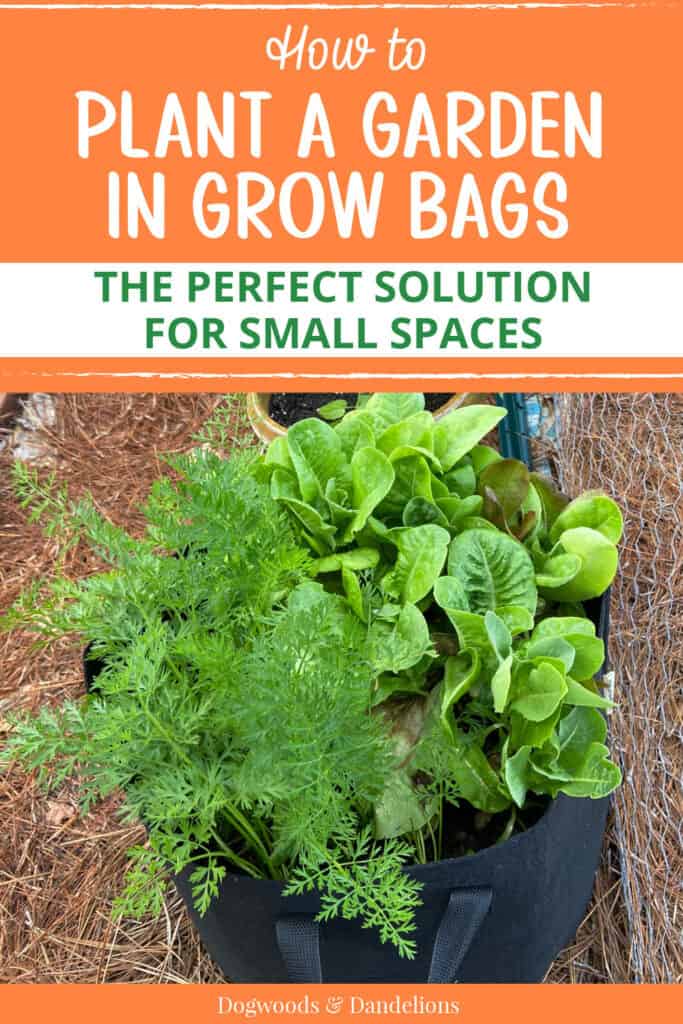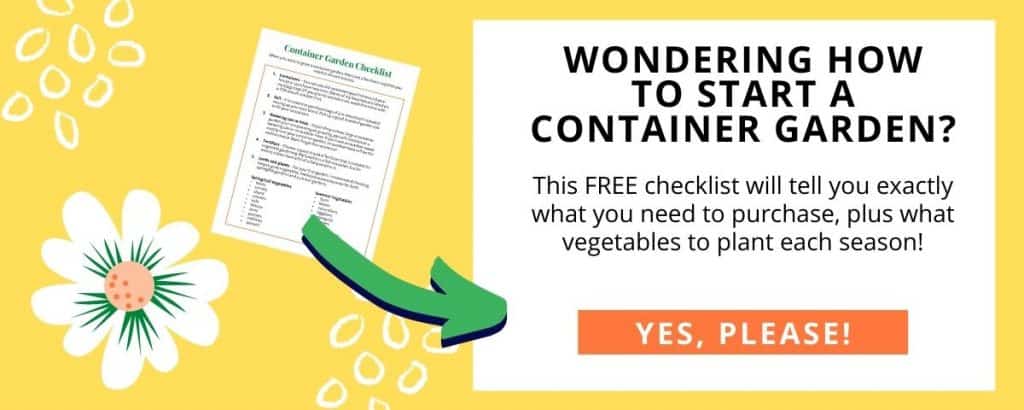How to Plant in Grow Bags
Inside: Learn how to plant a garden in grow bags. Grow bags are the perfect gardening solution for those who don’t have a large space.
Introduction to Grow Bag Gardening
Have you ever thought about diving into the world of gardening but didn’t think you could because of limited space?
Or perhaps, you’re seeking a more flexible alternative to traditional gardening methods?
Maybe you don’t want to grow a lot, but just a few fresh homegrown tomatoes.
Let me share why grow bags could be the solution you’re searching for.
These ingenious containers offer a great solution for those with small outdoor spaces or hard, unforgiving ground that’s unsuitable for planting. Your balcony, patio, or small backyard can become a beautiful space for a flourishing garden.
Imagine the joy of harvesting your own veggies or enjoying the sight of blooming flowers, all from the coziness of your small space.
A few important facts about grow bags:
- Grow bags are a fantastic solution for gardening in limited spaces.
- They offer an alternative, flexible method to traditional in-ground gardening.
- With grow bags, even balconies and patios can become productive gardening spaces.
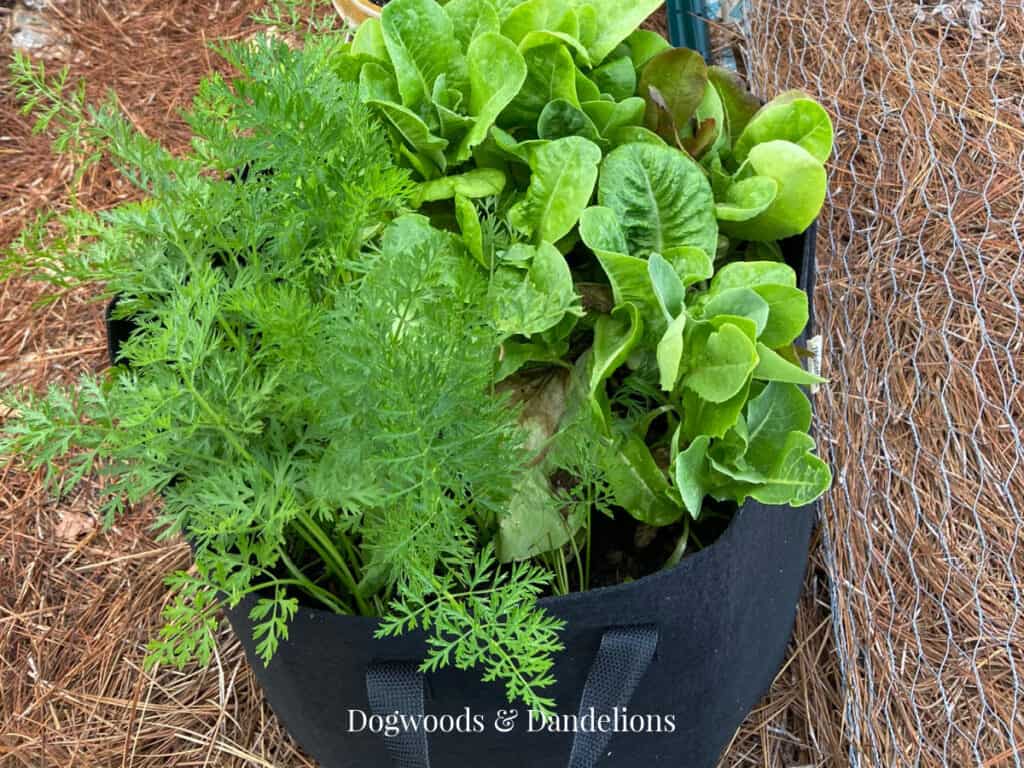
Affiliate Disclosure: Please note that some of the links in this article may be affiliate links and I may receive a small commission if you purchase something through a link. It will not change your cost. As an Amazon Associate, I earn from qualifying purchases. For more information, see my disclosures page.)
Choosing the Best Grow Bags
When you start looking into grow bag gardening, picking the right grow bags is like choosing a home. You wouldn’t want to live in a place that doesn’t suit your needs, right?
The same goes for your vegetables. First off, the material of the grow bag matters. Opting for a breathable fabric over plastic ensures your plant roots can breathe. It also allows excess water to drain off so your plant’s roots don’t rot in standing water.
And the size of the grow bag is critical! Imagine stuffing a big plant into a small bag – not a pretty sight, is it? Choosing the right size gives your plants enough room to flourish and spread their roots.
And let’s not forget those handy features like sturdy handles. Trust me, once your plants are all grown and lush, you’ll thank yourself for choosing bags that are easy to move around.
These are my favorite grow bags to use. I have a variety of sizes and they have held up for quite a few years, even with me leaving them lying in the garden when not in use. (I don’t recommend doing this though!)
Choosing the right grow bag can lead to healthier plant roots and, ultimately, better yields of veggies or flowers. So let’s dive into grow bag gardening and start making homegrown food simple, even in the smallest spaces.
The Perfect Size: Picking the Right Size Grow Bag
Deciding the perfect size for your grow bags truly determines the success or failure of your garden. Choose a bag too large and it will cost you in soil and water. Picking a grow bag too small will mean your plants can’t grow properly and you’ll have to water too often.
So how do you decide the right grow bag for your vegetables?
Well, first you must decide what you want to grow. Different plants need different size grow bags. For instance, if you want to grow root vegetables like carrots or turnips, they’ll need deeper bags to stretch their roots.
On the flip side, salad greens are more forgiving and can thrive in shallower containers so you don’t need a bag as deep or as large. And larger plants like tomatoes will need a larger bag than you will need for a few radishes.
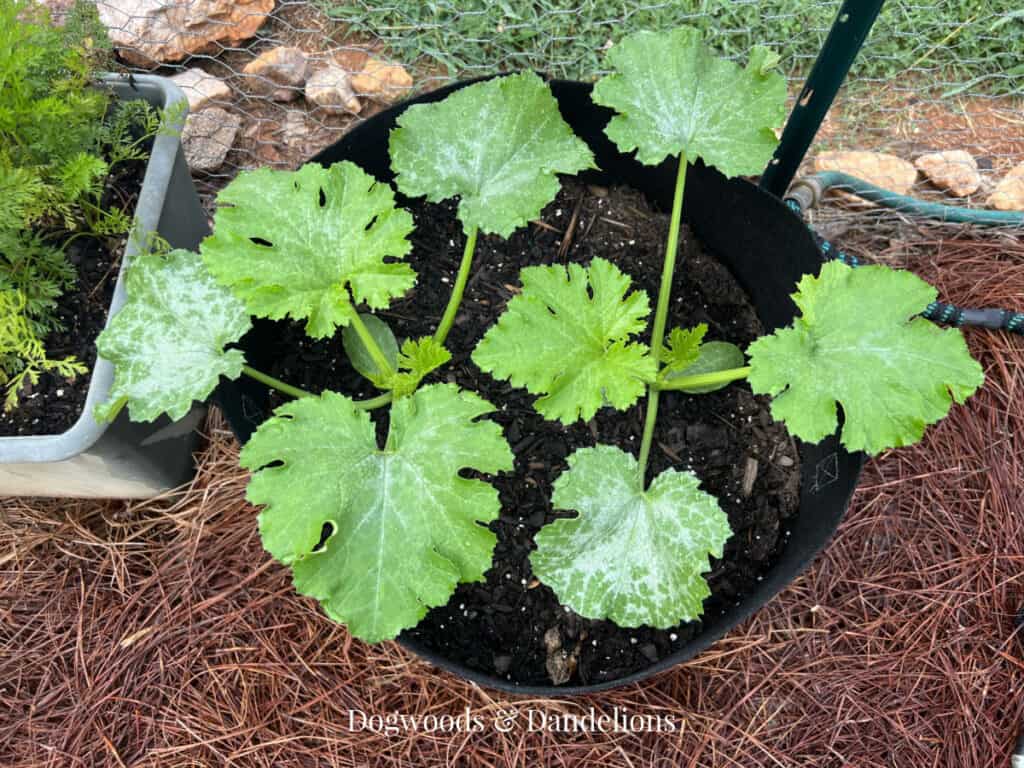
Here’s a suggestion of the minimum size of growing bags for some common vegetables you might like to grow. The larger bags will require more soil, but you won’t have to water as frequently.
Though you can grow vegetables in smaller bags, I prefer at least a 5-gallon bag. You can add multiple different vegetables to a larger bag and still not have to water as often.
- beets – 5 gallon
- carrots – 5 gallon
- cucumbers – 5 gallon
- green beans – 10 gallon
- lettuce – 5 gallon
- onions – 10 gallon
- potatoes – 20 gallon
- peas – 10 gallon
- peppers – 5 gallon
- radishes – 5 gallon
- squash or zucchini – 10 gallon
- tomatoes – 10 gallon
Plant Selection for Grow Bags
When I first tried a few plants in a grow bag, I discovered that some plants work better than others. And there wasn’t a lot of information about grow bag gardening.
But through trial, and error, and a lot of digging around for information, I’ve learned which plants truly work best in the unique environment that grow bags offer.
If you’re wondering where to start, I’ve got a few suggestions.
Root Vegetables
Root vegetables are a great option for grow bags. Carrots, beets, and radishes love the deep, unobstructed soil space that allows their roots to grow strong without worrying about heavy soil.
Salad Greens
Lettuce and other greens are my favorite thing to grow. There’s nothing like harvesting your own fresh salad greens from a grow bag. They require relatively shallow soil, making them perfect for smaller bags. And you can grow lots of lettuce for very little money in a grow bag.
Tomato Plants
Tomatoes and grow bags are a match made in heaven. They benefit from the improved air circulation to the roots and the ease of managing watering.
So, if you want to make the most of your grow bag gardening experience, starting with these plant families might just be your best bet. Let’s learn how to plant in grow bags!
Preparing Your Grow Bags
Preparing your grow bags for planting is important and choosing the right soil mix is key. You want a blend that contains vital nutrients but is also well-draining. Your plants need a soil mix rich in organic material and with just the right texture that allows for easy root penetration and optimal hydration.
The Ideal Growing Medium
Choosing the right growing medium for your grow bags can leave you confused. The home improvement stores are full of various potting soils that scream “buy me.”
You need to look for a mix that provides enough support for deep roots and young plants, while also being light enough to encourage air pruning and healthy growth.
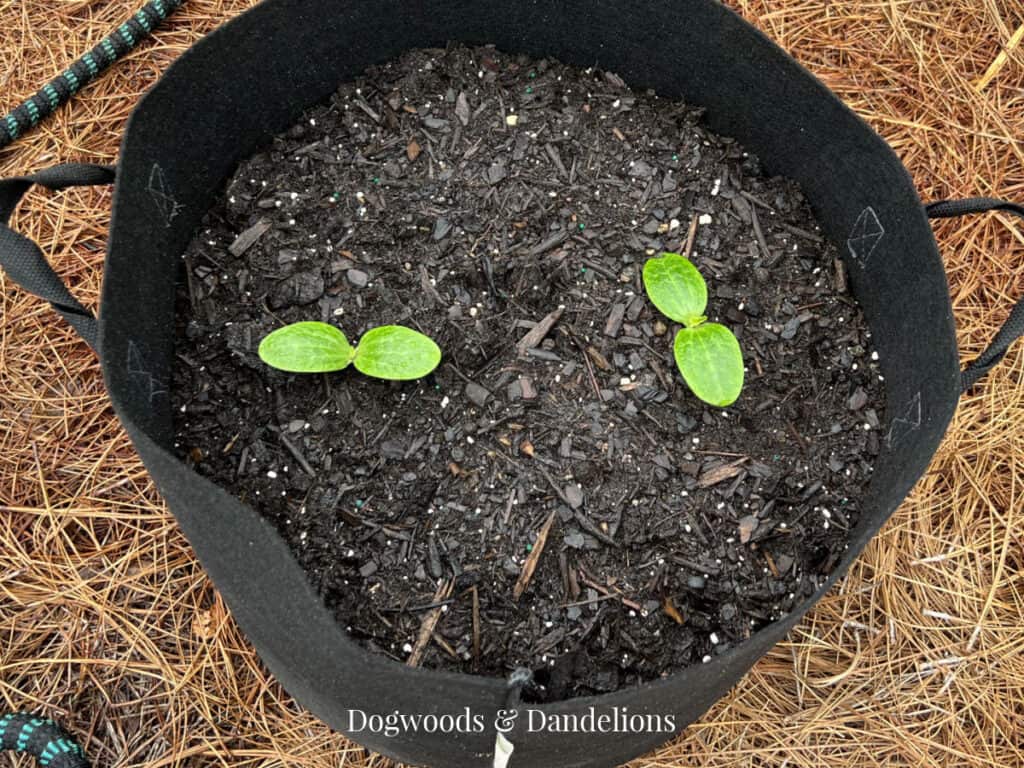
A good soil for your vegetable plants, from tomato plants to sweet potatoes, should be rich in organic material but not too dense. Pro-mix is a popular choice for many vegetable gardeners, but I’ve also been pleased with Back to the Roots Potting Mix as well.
Too much water retention can lead to root rot, especially in root crops that prefer well-draining conditions. So, mixing in some breathable material like coconut coir or perlite can help improve drainage and keep those leafy greens and cucumber plants happy and healthy. However, check your bag of potting mix as many already contain some or both of these ingredients.
On the flip side, your growing medium should also be able to hold onto moisture to support your plants on hot days, otherwise you will be watering too often. Vermiculite is an excellent addition to retain water. Again, many potting soils already contain this so be sure to check the label.
Whether you’re working with limited space or an in-ground garden, getting your growing medium just right is crucial. While I tend to try and save money where I can, purchasing a good quality soil is the best investment you can make in your garden’s health.
Don’t be tempted to use soil you dig up from your yard. Growing bags require more specialized soil to ensure optimal growth.
Ensuring Proper Drainage
Ensuring proper drainage is another crucial step in preparing your grow bags. You don’t want your plants’ roots sitting in water.
To guarantee this doesn’t happen, be sure there are ample holes at the bottom of the bag. Many fabric bags don’t need actual holes as they are already porus.
Sometimes, I’ll also add a layer of gravel or broken pot pieces at the bottom to further improve drainage.
Where to Locate Your Grow Bags
If you are using grow bags to grow vegetables, you will need to place your grow bags somewhere that receives a minimum of 6 hours of sunlight each day. For optimal production, 8 -12 hours is preferred.
If you are growing flowers, read the plant label or seed packet to see how much sun your flowers require.
It is also best to locate your grow bags near an outdoor spigot so you don’t have to drag a hose or haul water very far as that can make managing your garden very tedious.
Watering and Nutrient Management
When using grow bags, we must not overlook a crucial aspect – watering and nutrient management. You see, the breathable material of grow bags offers excellent drainage, which prevents root rot. However, this also means that they can dry out faster than in-ground gardens or traditional plastic pots.
This is where consistent watering plays its part. Whether you’re growing sweet potatoes, salad greens, or cucumber plants, ensuring that your plants receive a steady supply of water is key to avoiding the stress that can slow your plants’ growth and yield.
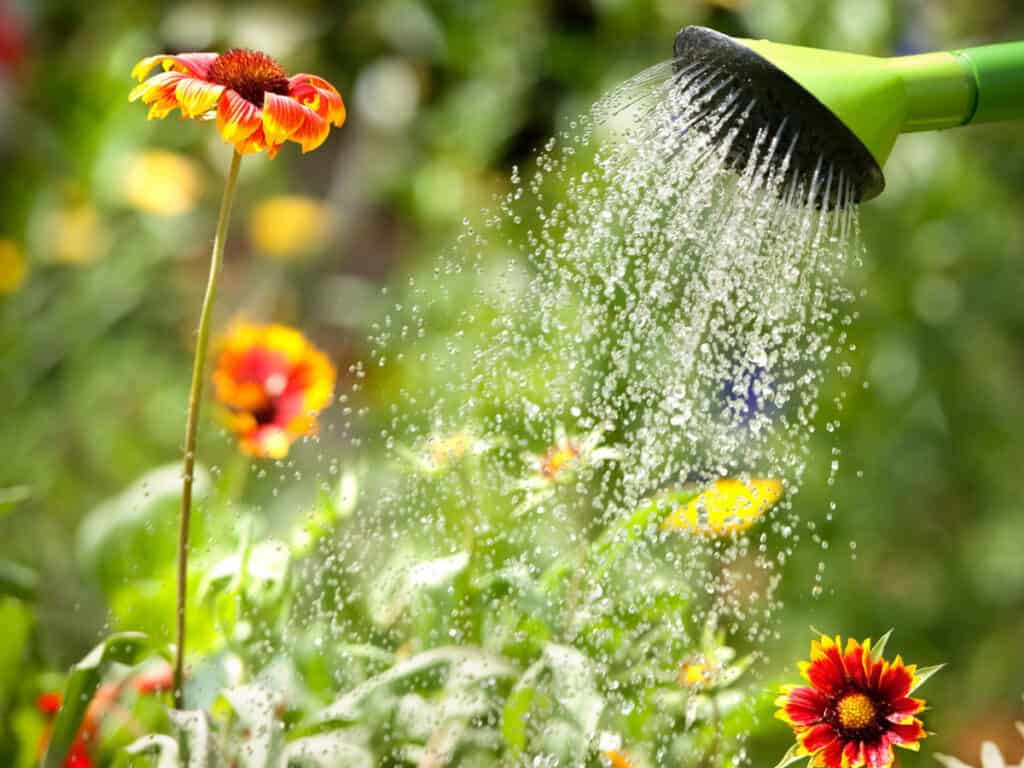
Moreover, the use of organic fertilizer takes on a new level of importance in grow bags. With limited space, your vegetable plants, root vegetables, and leafy greens rely on you to provide them with the necessary nutrients to thrive. They can’t keep stretching their roots to find more of what they need in a grow bag.
An organic fertilizer not only fosters a healthier root system but also contributes to a better harvest of fruit trees and vegetable crops by enriching the growing medium with organic material. Regular applications of organic fertilizer (use the package recommendations) will replace the nutrients that are leached out by regular watering.
Maximizing Space with Grow Bags
if you have a small growing space, grow bags can certainly help you maximize that space. Whether you have a patio, balcony, deck, or porch, grow bag gardening can allow you to grow and harvest lots of fresh vegetables from a small area.
Embrace the versatility of grow bags by arranging them up your sunny steps in tiers for an elegant, space-saving solution. Plant some grow bags with salad greens and others with vibrant flowers. Tuck a few herbs into a larger one. You’ll have both food and beauty right outside your door.
For those of us with larger gardens, interspersing fabric bags amidst the in-ground beds can significantly enhance your garden’s aesthetic while promoting a healthier root system through air pruning. With my heavy clay soil, I love planting carrots in grow bags to keep the roots straight. I can pop a few grow bags of carrots anywhere I have some extra space in my garden.
And don’t forget that gardening in grow bags means your garden is portable! Thinking about moving? Your garden can go with you.
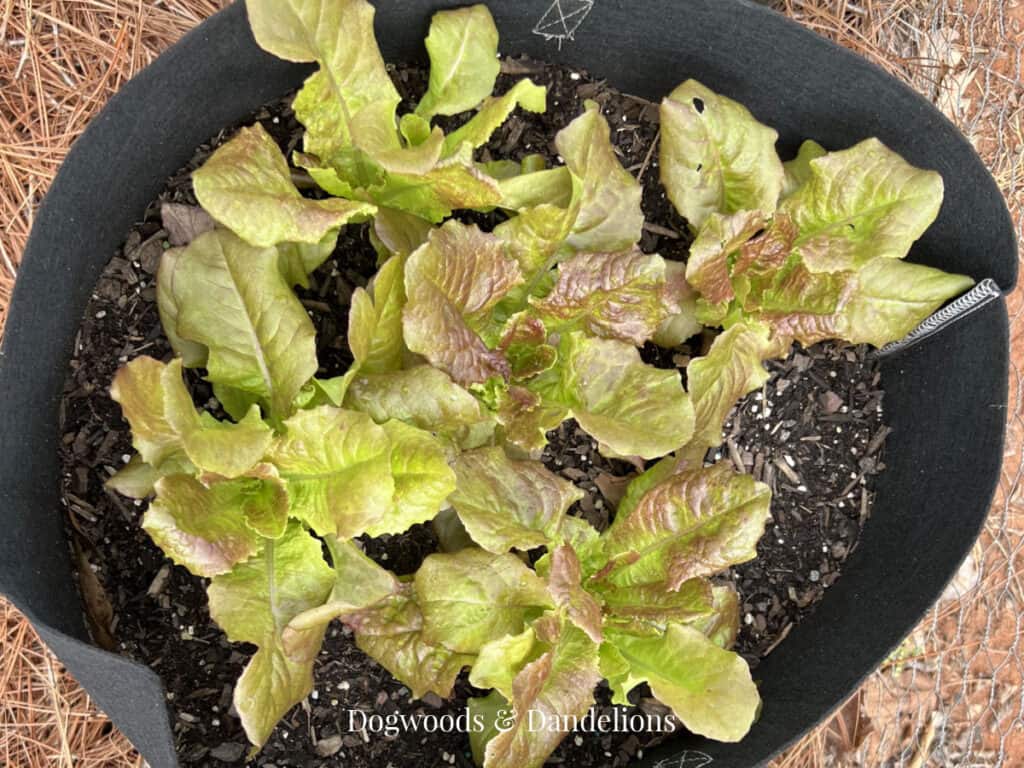
Want to plant lettuce in the spring? You can move it to a shady spot as the temperatures soar and keep harvesting greens a little bit longer.
Reimagining your garden layout becomes a breeze, allowing you to chase the sun or shuffle plants to optimize pollination and growth.
Staking and Support for Taller Plants
When you’re cultivating taller plants such as tomato plants or cucumber plants in grow bags, staking and support become crucial to ensure they thrive without tipping over.
Rather than worrying about traditional stakes puncturing your breathable fabric bags, consider using a tomato cage or a sturdy trellis. These can be gently inserted into the grow bag as long as you do it carefully so as not to disturb the root system of your vegetable plants.
Additionally, using cages or trellises allows for easier access when it comes time to harvest your cucumbers or other vegetables that grow on vines. Remember, a little bit of planning in the beginning will lead to larger harvests down the road!
Dealing with Pests and Diseases
I wish I could tell you that pests and diseases won’t find your plants in grow bags, but unfortunately, that’s not true. Even in grow bags, you will likely experience the same disease and pest pressure as you would in a regular in-the-ground garden.
However, with a few small containers, you are likely to notice the issues much sooner. And the same methods of prevention and treatment apply when using grow bags.
Firstly, regularly inspect your tomato plants, cucumber plants, and salad greens for any signs of distress. The breathable material of grow bags does offer some defense, promoting healthier root systems less susceptible to root rot.
But, pests can still find their way to your precious vegetable crops. Utilizing a drip irrigation system can help keep the foliage dry and less attractive to pests like slugs and aphids.
For those stubborn pests, introducing natural predators into your vegetable garden can be an effective and organic method to maintain balance. Ladybugs and lacewings feast on aphids, while birds can help control the population of harmful insects. Planting a few grow bags with flowers will go a long way to attracting beneficials that will eat aggravating pests.
Additionally, using organic fertilizers and ensuring your growing medium is rich in organic material will strengthen your plants’ natural defense mechanisms.
Remember, the key to a healthy container gardening experience is prevention. By choosing the right size and breathable fabric for your grow bags, and being proactive in your care, you can minimize the impact of pests and diseases, ensuring a bountiful harvest of vegetable crops and fruit trees alike.
Harvesting and End-of-Season Care for Your Grow Bags
As we move towards the end of the growing season, you might find yourself wondering about the best way to harvest your vegetables from grow bags and how to care for the bags once the garden’s bounty has been collected.
First, when it comes to harvesting, timing is everything. You’ll want to ensure that root vegetables and sweet potatoes are picked from their fabric pots at their peak for the best taste. Most seed packets will tell you how long to expect the crops to take to reach maturity.
For leafy greens and herbs, regular snipping encourages more growth, giving you an extended harvesting period. Harvest leaves from the outside and the plants will continue to grow.
Secondly, caring for your grow bags at the end of the season is crucial for next year’s success. Empty out the used growing medium, shake off excess soil from the bags, and wash them with a mild bleach solution to kill off any lingering pests or diseases.
Once dry, fold them up for storage. This small effort can make your grow bags last for several more seasons, making them a sustainable choice for those of us passionate about green gardening. (Don’t be like me and leave them lying in the garden all winter!)
Last but not least, consider rotating your crops each year to prevent soil depletion and reduce the risk of disease. If you use the same soil, plant a different vegetable in the same grow bag and amend the soil with a quality organic fertilizer.
Otherwise, you can compost the potting soil and buy new soil each year.
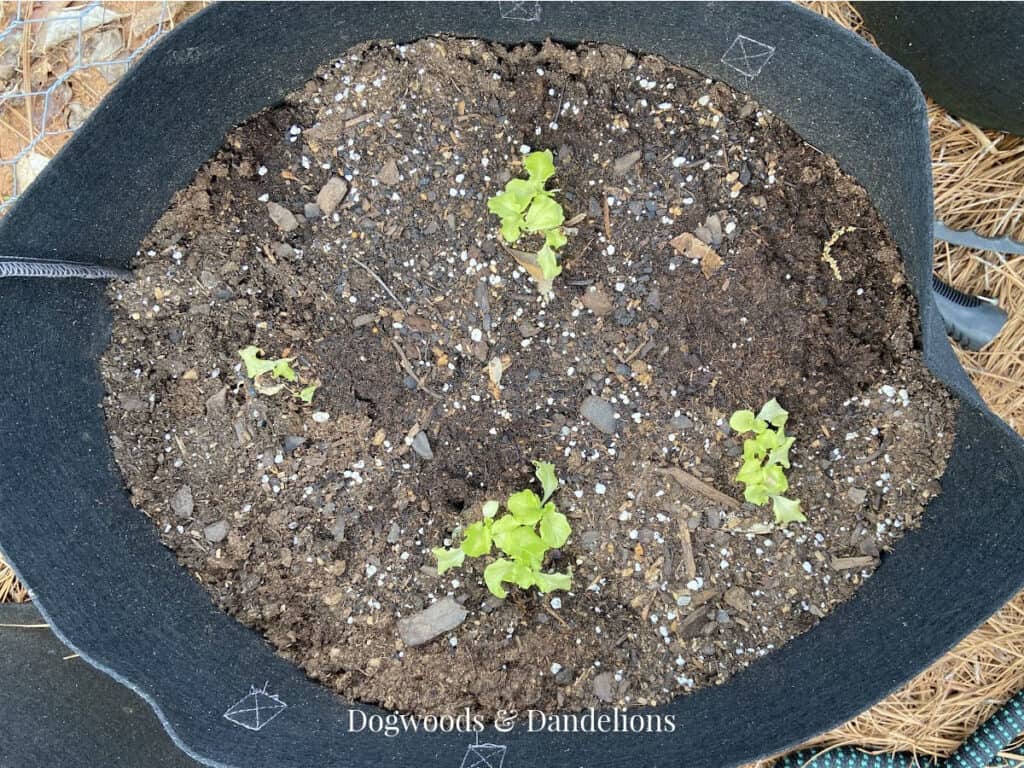
Grow Bags: The Perfect Solution for Small-Space Gardening
Whether you’re nurturing young plants or tending to an in-ground garden that just needed a bit more variety, the selection of the right size and best grow bag material has empowered us to cultivate everything from tomato plants to sweet potatoes.
The air pruning that occurs within these fabric containers encourages a healthier root system, a key component in growing bountiful harvests in your vegetable garden.
For those of us with limited space, grow bags offer a compact solution without compromising the growth of root crops. Plus, the ease of adding a high-quality growing medium, implementing a drip irrigation system, or simply using a handful of organic fertilizer, demonstrates the simplicity and effectiveness of container gardening.
So, if you’re looking at your small patio or balcony, wondering how you could possibly produce some of your own food, I encourage you to consider grow bag gardening. You just might be surprised at how much you can grow and how much enjoyment gardening brings you.
More Grow Bag and Container Gardening Info:
I also wanted to share a few of my favorite books on growing in containers and grow bags. Remember, most info that applies to growing in containers works for grow bags as well.
How to Start a Container Garden
How to Start a Container Garden is a downloadable ebook (written by me) that shares the best ways to start a container garden. This book is perfect for beginners and even shares ways to combine plants in containers to maximize your space.
Grow Bag Gardening by Kevin Espiritu
Grow Bag Gardening by Kevin Espiritudives deep into ways to grow vegetables, herbs, fruits, and flowers in fabric pots. This book covers much more information than would be feasible for a blog post. If you are serious about growing lots of food in grow bags, I encourage you to check it out.
Related Posts
- How to Grow a Container Garden with Your Kids
- How to Grow Zucchini in a Container
- How to Grow Basil in Containers

Meet Julie
I’m a farm girl born and bred in North Carolina. I’ve been growing a vegetable garden for over 20 years (and helping my Mom grow hers even longer). I’ve been raising chickens in my bathtub and backyard for 12+ years. I believe that homegrown food can be made simple. Let’s get started.
